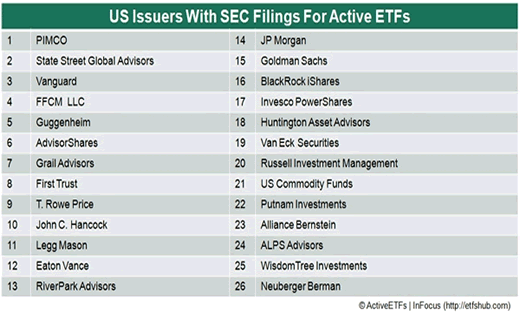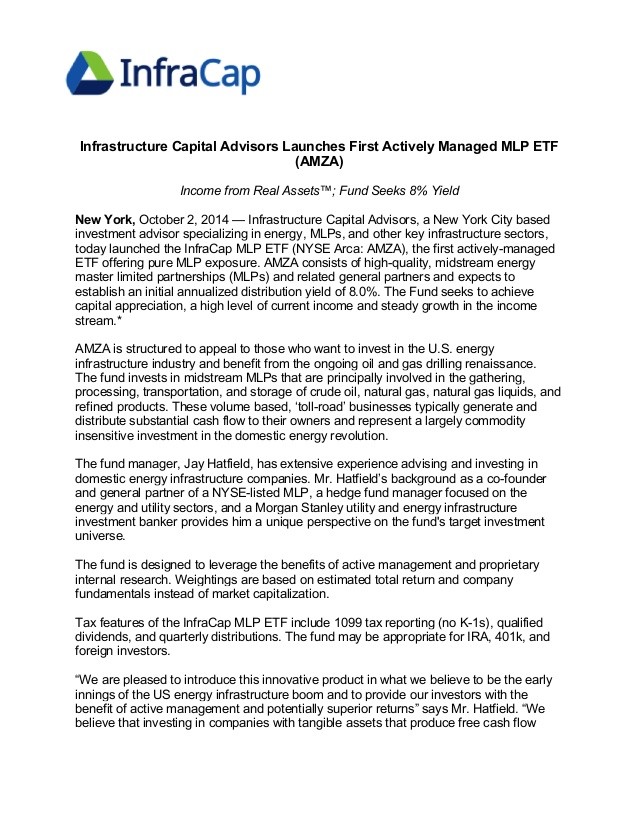Actively Managed ETFs_1
Post on: 10 Апрель, 2015 No Comment

Exchange-Traded Funds, or ETFs, were first introduced in the marketplace just over two decades ago. Though still a relatively new investment vehicle, ETFs are gaining momentum, capturing investor attention by offering benefits traditional mutual funds do not — including lower costs, ease of purchase, tradability, increased transparency and liquidity.
Within this growing ETF space is another trend — rather than passively tracking major indexes, more and more fund managers are choosing to actively manage their ETF portfolios without the limitations of a predefined index. Read on to learn more about ETFs, the difference between active and passive ETF management and the important role outside fund administrators play in the ongoing operation of ETF funds.
What is an Exchange Traded Fund?
ETFs are pooled investment vehicles that combine the valuation of mutual funds with the tradability of stocks. Like mutual funds, most ETFs track major indexes for diversification and to reduce investor risk, but they’re exchanged more like stocks and can be traded at any time of the day that the marketplace is open. (Mutual fund shares, on the other hand, can only be purchased or sold once per day — after the close of trading). In short, ETFs combine the investment range of a diversified portfolio with the simplicity of exchanging a single stock. ETFs are also typically traded in large blocks of shares, and market prices may or may not be the same as the net asset value (“NAV”) of those shares.
How is an Actively Managed ETF different?
Most ETFs are index-based, which means they track a securities index and are passively managed with the goal of replicating industry benchmarks. Actively managed ETFs, however, are not based on an index but instead a portfolio of securities subjectively chosen by fund managers. Actively managed ETFs are more flexible, enabling fund managers to change allocations and deviate from indexes as they see fit with the goal of outperforming industry benchmarks.
How can a third-party fund administrator help?
If you’re considering starting an actively managed ETF, bringing in a third party to handle administrative and operational functions can help you streamline the process, saving you both time and energy as you focus on investment objectives and strategies. Learn more below.
Fund Registration
Organizing and starting your ETF fund can be a very detailed and time-consuming process. ETFs must be registered as an open-end investment company with the SEC under the Investment Company Act of 1940, and must therefore comply with complex federal regulations. By bringing in a third party administrative team to manage every aspect of the fund organization and registration. you not only streamline the process, you can also reduce the initial cost of organization and ensure your fund is set up correctly from the very beginning.

An administrator that has a series trust open to adding additional ETF series can be quite beneficial in cost, timing and infrastructure.
ETF Fund Accounting & Reporting
Though ETFs share some similarities with mutual funds and stocks, they have a unique structure that necessitates special accounting and reporting measures. Actively managed ETFs are required by the SEC to disclose their holdings daily — and in having a third party fund accountant, you alleviate your team of that ongoing reporting burden. And when you partner with Nottingham, you also gain access to our proprietary fund accounting systems, which ensure the efficient and accurate reporting of fund prices. (Learn more about our actively managed ETF accounting services here .)
ETF Fund Administration Services
Once your EFT is in operation, there are several ongoing administrative tasks that require timely attention and expertise to ensure your fund remains in compliance with federal and state regulations. Bringing in an outside fund administrator to assist with regulatory support and other day-to-day operations streamlines that process for you, and also gives you the peace of mind knowing your fund is in experienced hands.














